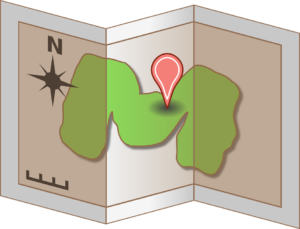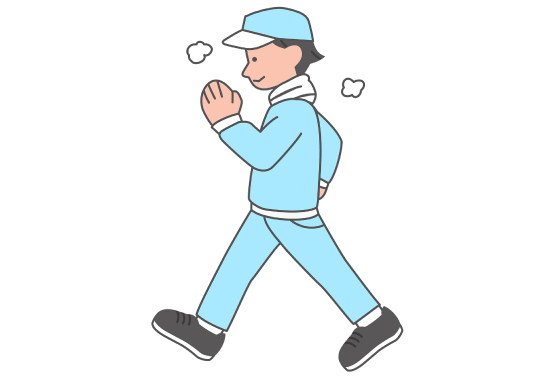2.10: Gramática- El verbo estar + preposiciones / ¿Dónde?
- Page ID
- 183384
Objetivos
- Recognize the correct conjugations of the verb estar
- Use the prepositions of location to describe where things and people are located in a house
Estar
You have already learned the verb ser, and you’ve used it to: introduce yourself and others, to describe physical characteristics and personality traits, to indicate place of origin or nationality, to tell time, and to give dates. Spanish has another verb that also means “to be” – estar. You used estar at the beginning of this course to indicate how you are feeling (¿Cómo estás? Estoy bien, gracias). In addition to indicating how you and others are feeling (which we’ll discuss in a future chapter), estar is used to express location. So, if you are talking about where a person or a thing is located, you will use estar:
| estar (to be) | ||
| singular | plural | |
| 1a |
yo estoy |
nosotros estamos |
| 2a |
tú estás |
vosotros estáis |
| 3a |
él ella usted está |
ellos ellas ustedes están |
As you should notice, estar has an irregular yo form along with accented endings in all but the nosotros form.
Estar y la localización
To use estar to express the locations of people and things, you’ll need to know some prepositions of location as well:
- alrededor (around)
- al lado de (beside, next to)
- enfrente de (in front of)
- a la derecha de (to the right of)
- a la izquierda de (to the left of)
- debajo de (under)
- en (on, in)
- encima de (on, above)
- detrás de (behind)
- cerca de (close to)
- lejos de (far from)

- Alegría está en su dormitorio. (Alegría is in her bedroom.)
- ¿Dónde está tu restaurante favorito? (Where is your favorite restaurant?)
- Los padres de Benjamín están de vacaciones en Cancún. (Ben’s parents are in Cancún on vacation.)
- Ay de mí, ¿dónde están mis llaves? (Good grief, where are my keys?)
- La cafetería está enfrente de la librería. (The cafeteria is in front of the bookstore.)
- No estoy en clase ahora porque estoy enfermo. (I’m not in class right now because I’m sick.)
- Nosotros estamos cerca del museo pero no podemos encontrarlo. (We’re close to the museum, but we can’t find it.)
¿Dónde?
The question word used to ask about locations is ¿Dónde? (where?). It can be combined with prepositions to ask more specific questions, for example: ¿De dónde? (from where?) and ¿Adónde? (to where?). Remember that question words always need an accent mark, and don’t forget to put the upside-down question mark at the beginning of the question with the upside-right question mark at the end of the question.
- ¿De dónde eres? (Where are you from?)
- Soy de Oneonta, Nueva York. (I am from Oneonta, New York.)
- Ah, y ¿dónde está Oneonta? (Ah, and where is Oneonta?)
- Oneonta está en las montañas; no está cerca de la ciudad de Nueva York. (Oneonta is in the mountains; it’s not close to New York City.)
"Estar" with prepositions and adjectives
In 1.4.0 you learned how to conjugate the verb "ser" (to be). Unlike English, Spanish has a second verb that translates as "to be": "estar".
Conjugation
While it looks like a regular "-ar" verb, "estar" is an irregular verb because the "yo" form is irregular; and the endings of "tú, usted, él, ella, ustedes, ellos, ellas" require a written accent.
| Singular | Conjugation | Plural | Conjugation |
|---|---|---|---|
| yo | estoy | nosotros/nosotras | estamos |
| tú | estás | vosotros/vosotras | estáis |
| usted, él/ella | está | ustedes, ellos/ellas | están |
Uses of "estar"
The acronym used to help you remember the uses of "estar" is PLACE:

In the following list, the words that refer to the acronym PLACE are indicated in bold.
- Position: "El libro está encima de la mesa." "El lápiz está en la mochila." ("The book is on top of the table." "The pencil is in the backpack.")
- Location: "Ramiro está en la oficina." "Inés está en casa." ("Ramiro is at the office." "Inés is at home.")
- Action: "Ellos están hablando". "Beto está caminando." ("They are talking." "Beto is walking.")
- Condition: "Estoy enfermo." "Laura está preocupada." ("I am sick (ill)." "Laura is worried.")
- Emotion: "Tú estás feliz." "Vosotros estáis tristes." ("You are happy." "You are sad.")
Common prepositions and adverbs used with location are:
| al lado de | next to | delante de | in front of (not facing) |
| a la derecha de | to the right of | detrás de | behind |
| a la izquierda de | to the left of | en | in; on; at |
| allá | over there | encima de | on top of |
| allí | there | en frente de | in front of (facing) |
| aquí | here | entre | between |
| cerca de | near | lejos de | far from |
| con | with | sin | without |
| debajo de | below | sobre | on; over |
Common adjectives of condition and emotion are:
| abierto/a | open | contento/a | content | listo/a | ready |
| aburrido/a | bored | desordenado/a | messy; disorderly | nervioso/a | nervous |
| alegre | happy | enamorado/a (de) | in love (with) | ocupado/a | busy |
| avergonzado/a | embarrassed | enojado/a | angry | ordenado/a | tidy; orderly |
| cansado/a | tired | enfermo/a | sick (ill) | preocupado/a (por) | worried (about) |
| cerrado/a | closed | equivocado/a | wrong | seguro/a | sure |
| cómodo/a | comfortable | feliz | happy | sucio/a | dirty |
| confundido/a | confused | limpio/a | clean | triste | sad |
A Practicar
Contributors and Attributions
- Gramu00e1tica: El verbo estar + preposiciones. Authored by: SUNY Oneonta with Lumen Learning. Provided by: SUNY Oneonta. License: CC BY: Attribution





